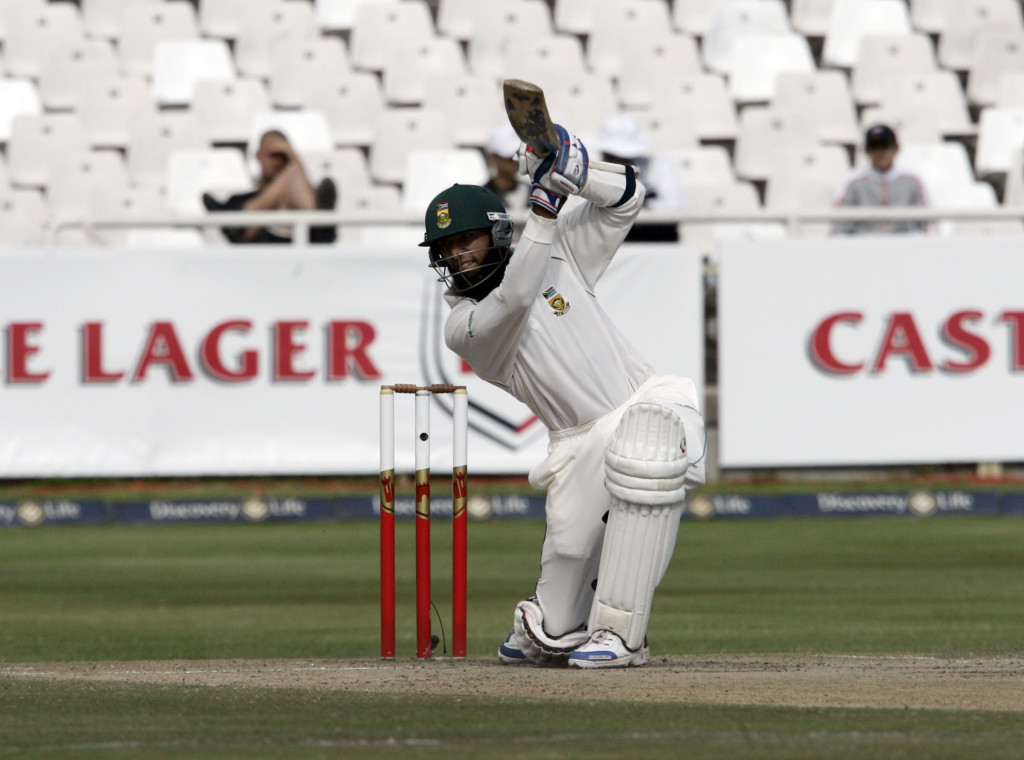Ever since Hashim Amla threw his wide-brimmed hat into the ring, to succeed Graeme Smith as Proteas Test captain, the outcome was expected.
AB de Villiers had been favourite, considering he experienced leadership in the ODI arena and was seen to be the most vocal player on the field when Smith went off the park for a ‘comfort break’ in the Test series against Australia earlier this year. Yet, like the other candidates, there were issues to address in installing a captain.
De Villiers simply couldn’t be made skipper because he is too good a player. Not making sense?
OK, let’s put down a Proteas Test XI that could take to the field against Sri Lanka in ‘normal’ circumstances: Alviro Petersen, Dean Elgar, Amla, Faf du Plessis, De Villiers (wk), Duminy, Robin Peterson, Vernon Philander, Dale Steyn, Morne Morkel and Imran Tahir.
Now, if De Villiers had been appointed captain, he’d have to be relieved of his wicketkeeping duties. There is simply no way that any player, no matter how gifted, can captain a side like the Proteas, keep wicket – and have aspirations to be the No1 batsman in the world. Sure, it has been done before. Look at MS Dhoni with India and Kumar Sangakkara with Sri Lanka. But it’s not a role that would suit the energetic De Villiers. A Test match, played over five days is too mentally and physically demanding to be able to fulfil all three duties. So, he’d have to be moved in the field, possibly to the gully/cover region, plugging that area along with JP Duminy and Du Plessis.
And then the Test XI would change, possibly to look like: Petersen, Elgar, Amla, Du Plessis, De Villiers (capt), Duminy, Quinton de Kock, Philander, Steyn, Morkel and Tahir.
The problem with this starts in the slip cordon. De Kock is still a greenhorn, talented no doubt, but inexperienced. And then gone from the slips are the retired Smith and Jacques Kallis. Who stands next to De Kock, guiding him through the sessions, mentoring and monitoring? Petersen is comfortable at slip, so he could move to first slip, but who has experience at standing at second and third slip? It has to be a concern.
You’ll have Philander nipping the ball off the seam and Steyn with his late swing all looking for the edge of the bat. Catches win matches and slip fielding is a specialist position.
Smith and Kallis were supreme in the slips and helped De Villiers find his feet behind the stumps after Mark Boucher was forced to retire. I can’t see how yet another experienced player can come out of that area to accommodate De Kock, at this stage.
Du Plessis still had to cement his spot in the side – he has to plug the massive hole left by Kallis – while Duminy himself has to start making those hundreds at No6 that he seemed destined for.
So, that left Amla, the quietly spoken, some say introverted, No3 batsman. He has shied away from the captaincy in other formats and even at franchise level and it has probably benefited his career as it has allowed him to be a senior in the squad while concentrating on his batting. I understand there was support for Amla in CSA circles – and that, as is the case in South Africa, politics played a role. There was a strong lobby for him to be appointed the country’s first Test captain of colour.
Yet, Amla’s elevation will also raise a few issues. There are commitments to the sponsors that might create debate behind the scenes and the new captain isn’t a natural when it comes to drumming up publicity. We also now have three captains for the three different formats, and that in itself isn’t desirable, in my opinion.
But what is already abundantly clear is that the retirements of Smith and Kallis have left huge holes in the Proteas Test make-up and as much as the public had mixed views on the pair of them, they cannot be easily replaced. Their retirements could have cost De Villiers his chance to be captain. Both make my list of top 10 cricketers to have ever represented South Africa, which shows just how steep the mountain facing the ‘Class of 2014’ is.







